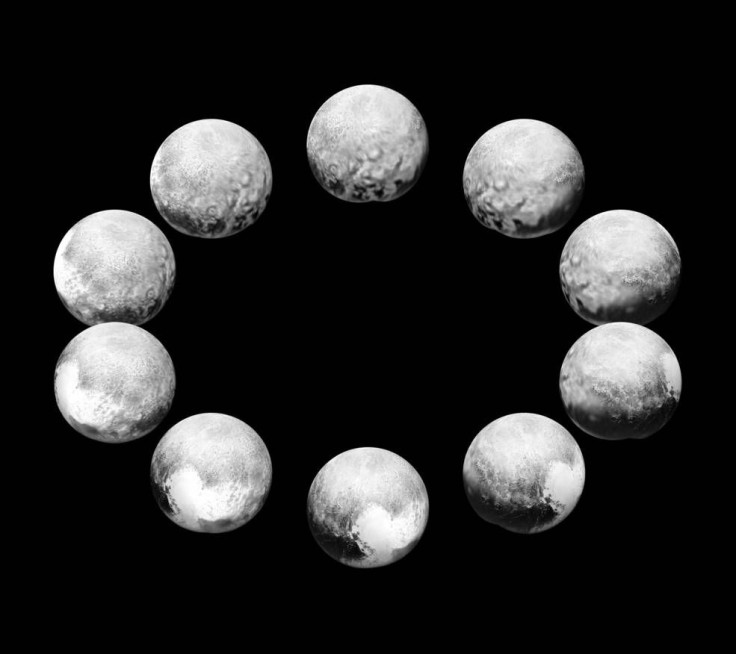NASA Releases New Images Of A Day On The Dwarf Planet Pluto

In the course of one day on Earth, almost a week will have passed on the dwarf planet Pluto. NASA's latest images -- taken by the New Horizons spacecraft in July -- show one day in the life of Pluto, which is equivalent to 6.4 days for Earth, NASA said on its website.
In a series of photos, Pluto is pictured during rotation as the New Horizons craft passed about 400,000 miles away. The farthest image in the photos sits in the 3 o’clock position. In the 6 o'clock position is the side NASA calls the “encounter hemisphere,” the closet side the craft saw.
The photos reveal many aspects of Pluto’s surface, such as the differences between the encounter hemisphere and the far side of Pluto. While in that area of the solar system, NASA also took photos of Pluto’s jumbo moon, Charon, which also takes 6.4 Earth days to rotate.
The images of Charon were taken as the spacecraft was about 6.4 million miles away. The most distant images represent the 9 o’clock position. The most detail can be seen in the 12 o’clock position.
Some features at the far side of the moon are visible, such as canyons, rolling plains and cratered uplands, according to NASA. The far side of Charon and the near-side hemispheres are very similar-looking, NASA said.

The New Horizons spacecraft is continuing on to take photos of an object outside the solar system that is about 30 miles wide, the Daily Mail reported. New Horizons won’t be seeing it anytime soon, however -- it's about a billion miles from Pluto and should be seen by the spacecraft in 2019.
Pluto’s day is 6.4 Earth days long. See the full rotation captured by @NASANewHorizons: https://t.co/xDBNbbNrcM pic.twitter.com/TQ3YZ1aYlE
— NASA (@NASA) November 20, 2015New Horizons was launched in 2006 and conducted a mission around Pluto this year, NASA said. The New Horizons mission seeks to figure out how Pluto and its moons fit in with other objects in the solar system.
© Copyright IBTimes 2024. All rights reserved.





















